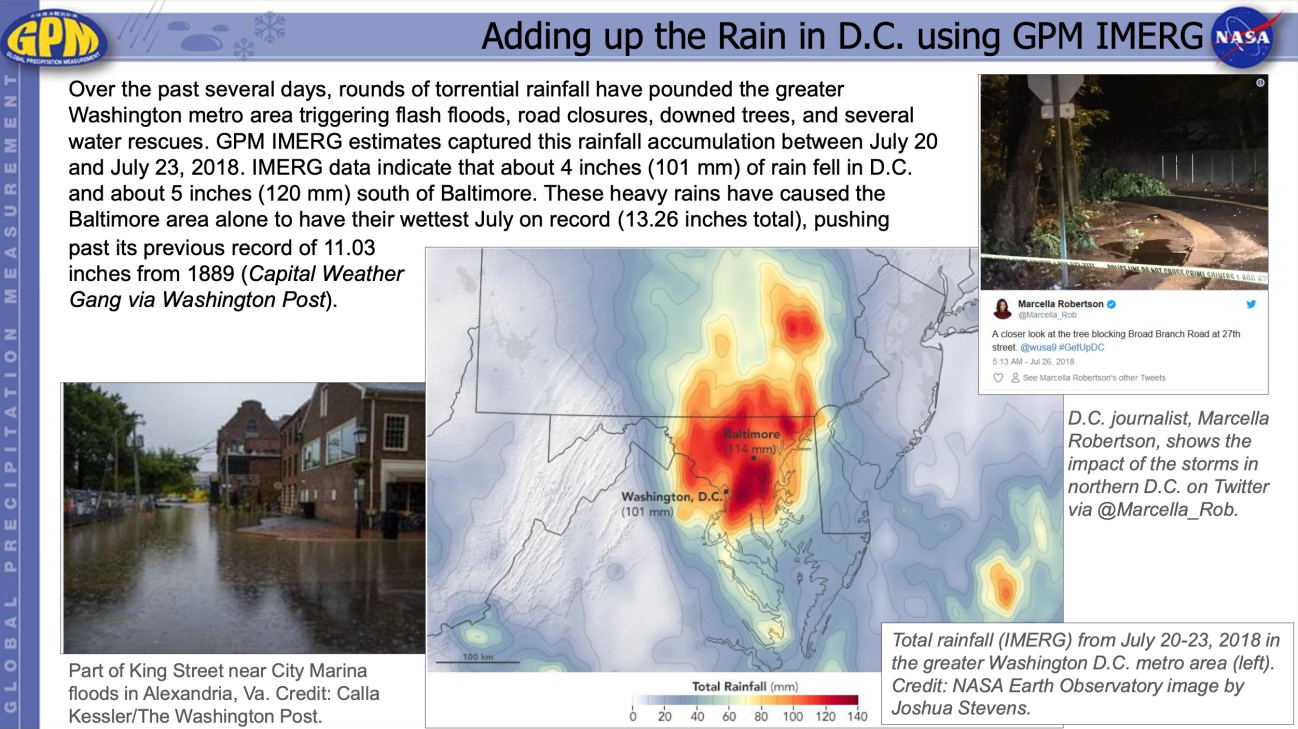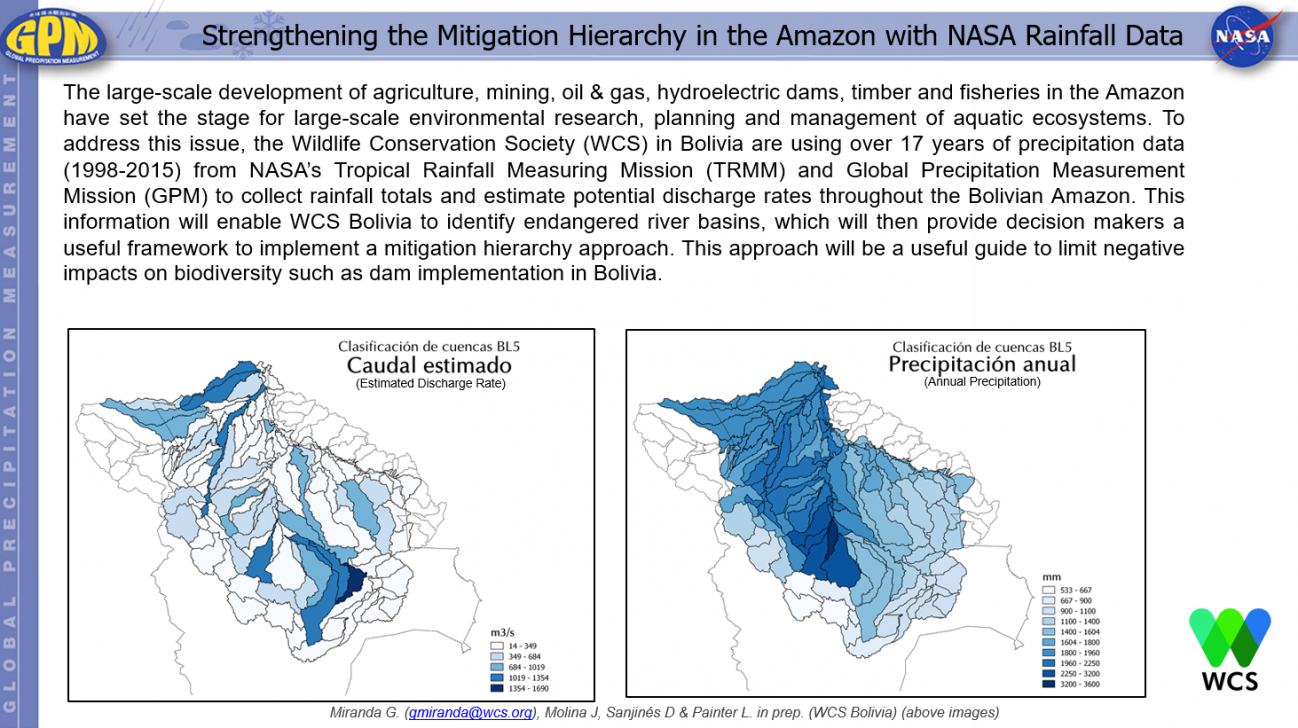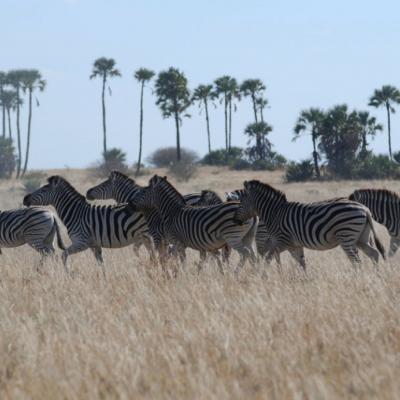Ecology
Ecological management is critical for maintaining and repairing ecological systems so the systems reliably supply human needs while conserving and sustaining ecological services and diversity. Satellite observations can provide critical information relevant to the distribution of ecosystems and their resident species. Natural resource managers and scientists use this information to understand patterns of biodiversity, how biodiversity is changing, drivers of changes, and to predict impacts of environmental changes on ecological systems. The Ecological Management Applications area encourages the use of satellite precipitation data from the GPM constellation to analyze and forecast changes that affect ecosystems and to develop effective resource management strategies.









